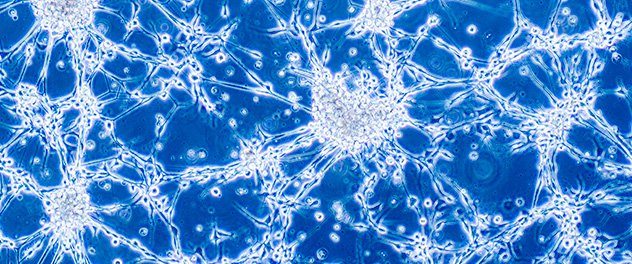 New treatments for brain cancer
New treatments for brain cancer
The Brain Tumor Stem Cell Research Lab at Mayo Clinic is currently developing new therapies for patients with glioblastoma that include investigating new nanodrug cancer treatments.
Local Treatment of Cancer with Self-Assembling Nanodrugs
The Brain Tumor Stem Cell Research Lab's project on local treatment of cancer with self-assembling nanodrugs is aimed at identifying a new intrinsic approach for treating brain cancer.
Glioblastoma is the most frequent and aggressive primary brain tumor in adults. The efficacy of chemotherapy in patients with glioblastoma is limited due to the blood-brain barrier. Dr. Quinones-Hinojosa's lab has developed a self-assembling camptothecin (SAC) nanofiber hydrogel system for local therapy of glioblastoma, and evaluated animal resection models that replicate the clinical conditions of patients with glioblastoma.
The lab's novel SAC hydrogel system exhibits controlled drug release over an extended period of time and high penetration into the brain tissue, with cytotoxic efficacy in vitro. The system is an innovative treatment for local cancer therapy that exhibits high penetration and survival benefit, and is a key element in the lab's efforts to develop a new local treatment for glioblastoma that minimizes systemic toxicity and increases drug penetration at the tumor.
This system brings the opportunity for a local route of administration, where anti-cancer drugs can target the tumor site, reducing or avoiding systemic toxicities. SAC hydrogel is an excellent vehicle for drug delivery in brain cancer, allowing surgeons to avoid potential adverse effects of systemic drug administration. Dr. Quinones-Hinojosa's research team hopes that its SAC hydrogel approach will lead to the identification of advanced local therapeutic agents for brain cancer.
Project team
Lab members and collaborators studying the local treatment of glioblastoma with self-assembling nanodrugs include:
- Paola Suarez Meade, M.D.
- Paula Valentina (Paula) Schiapparelli, Ph.D.